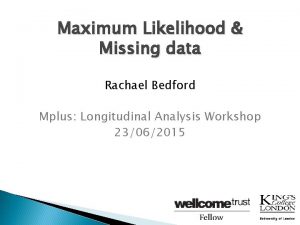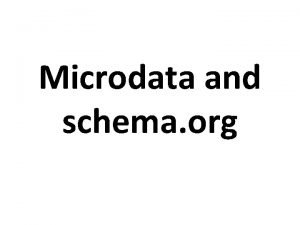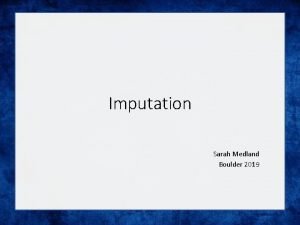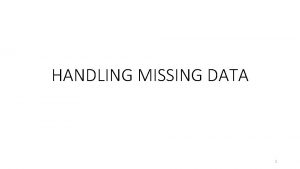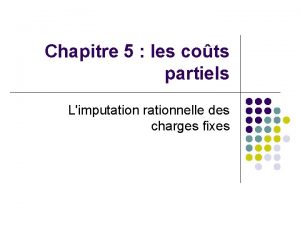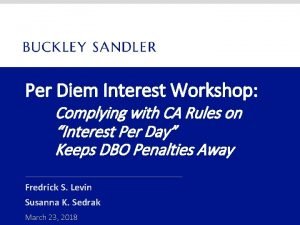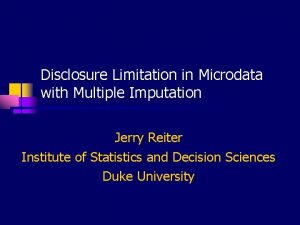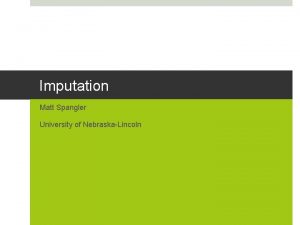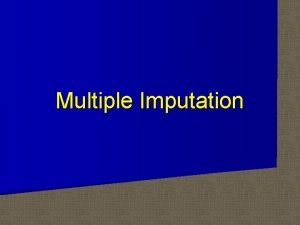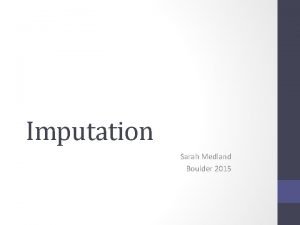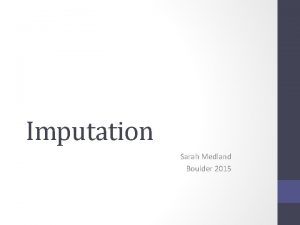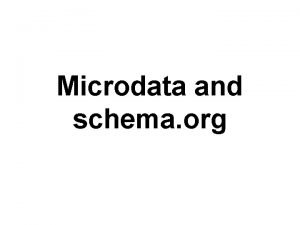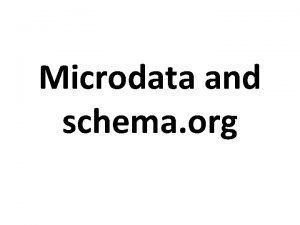Disclosure Limitation in Microdata with Multiple Imputation Jerry











- Slides: 11

Disclosure Limitation in Microdata with Multiple Imputation Jerry Reiter Institute of Statistics and Decision Sciences Duke University

General setting n n n Agency seeks to release data on individuals. Risk of re-identifications from matching to external databases. Statistical disclosure limitation applied to data before release.

Standard approaches to disclosure limitation n Suppress data n Add random noise n Recode variables n Swap data

Another approach: Partially synthetic data Release multiple, partially synthetic datasets so that: n Released data comprise mix of observed and synthetic values. n Released data look like actual data. n Statistical procedures valid for original data are valid for released data. Little (1993, JOS ), Reiter (2003, 2004 Surv. Meth )

Existing applications n Replace sensitive values for selected units: Kennickel (1997, Record Linkage Techniques ). n n Replace values of identifiers for selected units: Liu and Little (2002, JSM Proceedings), Current research with Sam and Rolando. Replace all values of sensitive variables: Abowd and Woodcock (2001, Confid. , Discl. , and Data Access), Survey of Income and Program Participation. Longitudinal Business Database.

Advantages of partially synthetic data n n n Confidentiality protected since risky identifiers or sensitive values not genuine. Replacements come from realistic models, so associations are preserved (as long as model is good). Varying amounts of synthesis can be done, depending on risk/utility tradeoff. Provide information in tails of distributions and release finer geographic detail. Agency can describe imputation model, so that analysts have a sense how their results are affected.

Handling missing and synthetic data simultaneously Reiter (2004, Survey Methodology) n n n Create m completed datasets using MI for missing data. For each completed dataset, create r replacement datasets using MI for partially synthetic data. Release M = mr datasets to public.

Inference with missing and partially synthetic data Reiter (2004, Survey Methodology) n Estimand: Q = Q (X , Y ) n In each synthetic dataset

Quantities needed for inference

Inference with missing and partially synthetic data n Estimate of Q : n Estimate of variance is n For large n, m, and r, use normal based inference for Q:

Ongoing research n n n Semi-parametric and non-parametric data generation methods. Risk/usefulness profile on genuine data in production setting. Packaged synthesizers.
